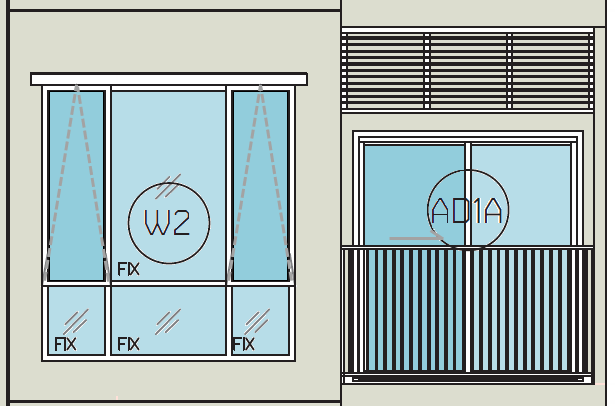Comparative Study of Air Exchange Rates in A High-Rise Residence by Using Both Tracer Gas Dilution and Fan Pressurization Methods
Main Article Content
Abstract
High-rise condominium living is becoming increasingly popular in the city while urban heat island effect has caused residents to close windows and use air conditioning unit all night. There is a buildup of indoor carbon dioxide (CO2) concentration within bedroom(s) of residential unit that will affect the quality of sleep and productivity on the following day. Thus, providing sufficient bedroom air exchange is highly important in order to maintain low CO2 concentration level within the residence. This study investigates room air change rate by conducting fan pressurization and tracer gas dilution experiments in a 30 m2 one-bedroom type unit of a condominium in Bangkok, Thailand. The two method yields similar air exchange results, achieving 1.215 ACH via fan pressurization and 1.387 ACH via tracer gas dilution when bedroom and living room spaces are connected to each other. The air exchange rate and CO2 concentration level are acceptable since the measured air change rate is higher than that required by design standards and CO2 concentration level is found to be lower than 1,000 ppm. After closing the bedroom door, however, CO2 concentration rises rapidly above 1,000 ppm while ACH drops to a level lower than suggested by design standards. Based on this experiment, it can be concluded that bedroom of conventional high-rise residential unit requires higher air exchange rate to ensure appropriate CO2 concentration level at night while occupants are sleeping.
Downloads
Article Details

This work is licensed under a Creative Commons Attribution-NonCommercial-NoDerivatives 4.0 International License.
All material is licensed under the terms of the Creative Commons Attribution 4.0 International (CC-BY-NC-ND 4.0) License, unless otherwise stated. As such, authors are free to share, copy, and redistribute the material in any medium or format. The authors must give appropriate credit, provide a link to the license, and indicate if changes were made. The authors may do so in any reasonable manner, but not in any way that suggests the licensor endorses you or your use. The authors may not use the material for commercial purposes. If the authors remix, transform, or build upon the material, they may not distribute the modified material, unless permission is obtained from JARS. Final, accepted versions of the paper may be posted on third party repositories, provided appropriate acknowledgement to the original source is clearly noted.
References
Ai, Z. T., Mak, C. M., Cui, D. J., & Xue, P. (2016). Ventilation of air-conditioned residential buildings: A case study in Hong Kong. Energy and Buildings, 127, 116–127.
Cheng, P. L., & Li, X. (2018). Air infiltration rates in the bedrooms of 202 residences and estimated parametric infiltration rate distribution in Guangzhou, China. Energy & Buildings, 164, 219-225.
Jareemit, D., Julpanwattana, P., & Choruengwiwat, J. (2015). Impact of outdoor air exchange rates on sleep quality and the next-day performance with application of energy recovery ventilator. Journal of Architectural/ Planning Research and Studies (JARS), 14(1), 22-32.
Schofield, W. (1985). Predicting basal metabolic rate, new standards and review of previous work. Human nutrition. Clinical nutrition, 39(1), 5–41 .
Sreshthaputra, A. (2016). Ventilation effectiveness of door-sided operable shutter (air post) in high-rise residential building. Academic Journal of Architecture, 65, 111-124.
Sherman, M. (1987). Estimation of infiltration from leakage and climate indicators. Energy and Buildings, 10(1), 81–86.
Strøm-Tejsen, P., Zukowska, D., Wargocki, P., & Wyon, D. P. (2014). The effects of bedroom air quality on sleep. Proceedings of the 13th International conference on indoor air quality and climate - indoor air 2014 [HA0506] International Society for Indoor Air Quality and Climate (ISIAQ). Hong Kong.
American Society of Heating, Refrigerating and Air-Conditioning Engineers [ASHRAE]. (2010). ANSI/ASHRAE Standard 62.1-2010, Ventilation for acceptable indoor air quality. Atlanta, GA: Author.
American Society of Heating, Refrigerating and Air-Conditioning Engineers [ASHRAE]. (2016). ANSI/ASHRAE Standard 62.2-2016, Ventilation for acceptable indoor air quality. Atlanta, GA: Author.
American Society for Testing and Materials [ASTM]. (2003). Standard test method for determining air leakage rate by fan pressurization. ASTM E779-03. USA.: Author.
Chartered Institution of Building Services Engineers. (2006). Environmental design: CIBSE guide A. London: Author.
Deutsches Institut für Normung e. V. (2012). Indoor environmental input parameters for design and assessment of energy performance of buildings addressing indoor air quality, thermal environment, lighting and acoustics (DIN EN 15251:2012-12). German: Author.
Ministerial Regulations No.39. (1994). Issued under the building control Act (1979). Thailand: Author.
Persily, A., & Jonge, L. de. (2017). Carbon dioxide generation rates for building occupants. Indoor Air, 27, 868-879.


